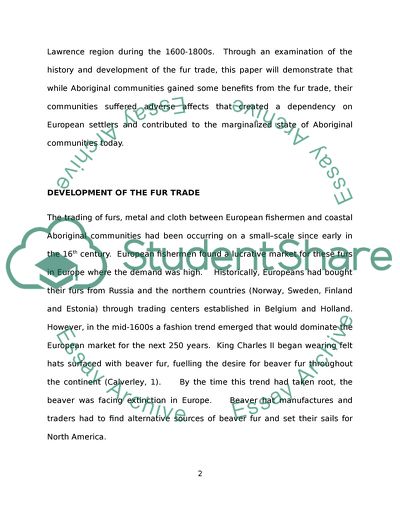Cite this document
(The Impact of the Fur Trade on Aboriginals in Canada Coursework, n.d.)
The Impact of the Fur Trade on Aboriginals in Canada Coursework. https://studentshare.org/history/1553348-the-adverse-effects-the-canadian-fur-trade-had-on-the-aboriginal-people-1600-1800
The Impact of the Fur Trade on Aboriginals in Canada Coursework. https://studentshare.org/history/1553348-the-adverse-effects-the-canadian-fur-trade-had-on-the-aboriginal-people-1600-1800
(The Impact of the Fur Trade on Aboriginals in Canada Coursework)
The Impact of the Fur Trade on Aboriginals in Canada Coursework. https://studentshare.org/history/1553348-the-adverse-effects-the-canadian-fur-trade-had-on-the-aboriginal-people-1600-1800.
The Impact of the Fur Trade on Aboriginals in Canada Coursework. https://studentshare.org/history/1553348-the-adverse-effects-the-canadian-fur-trade-had-on-the-aboriginal-people-1600-1800.
“The Impact of the Fur Trade on Aboriginals in Canada Coursework”. https://studentshare.org/history/1553348-the-adverse-effects-the-canadian-fur-trade-had-on-the-aboriginal-people-1600-1800.


